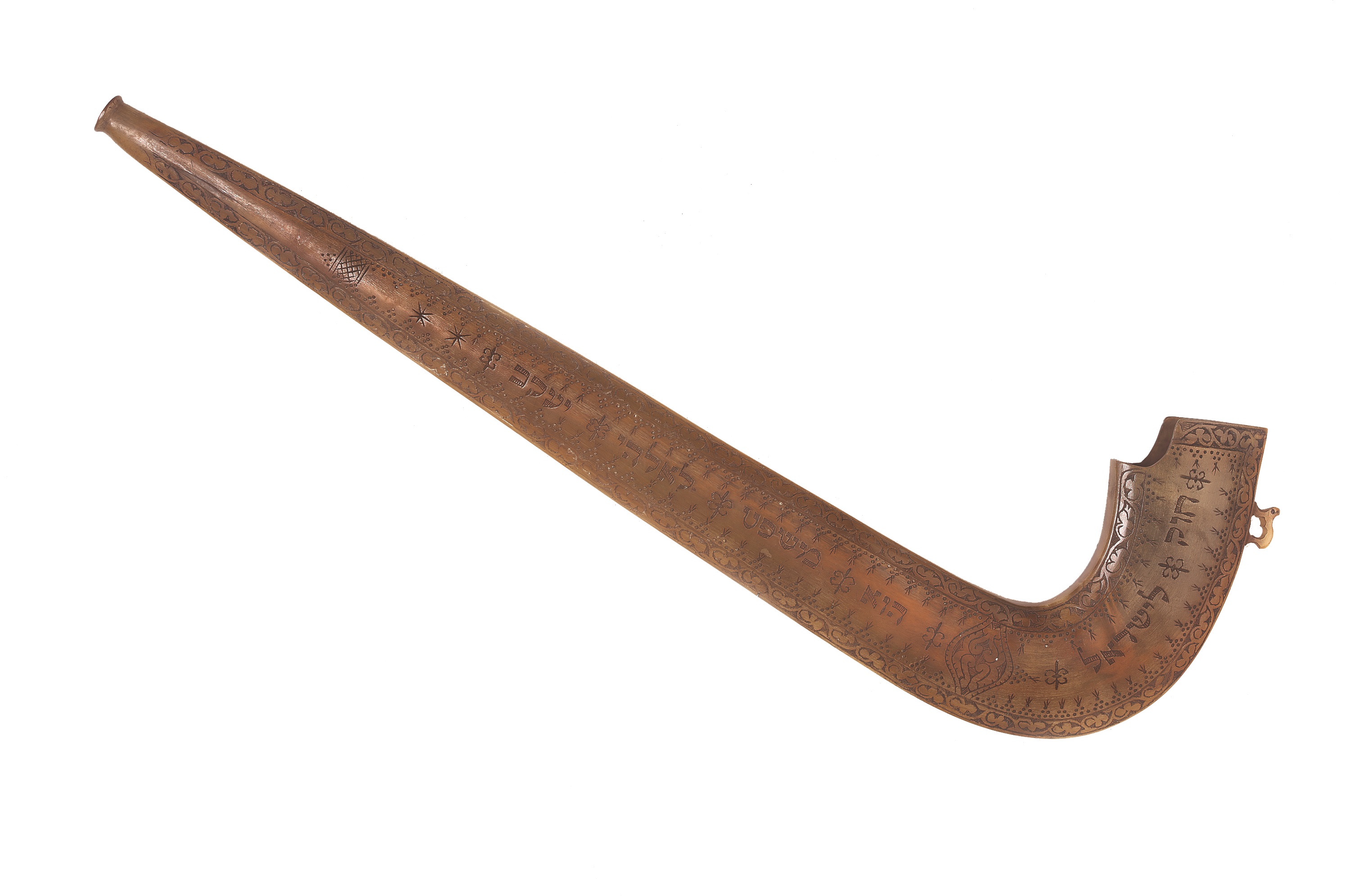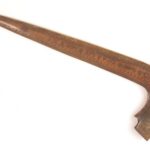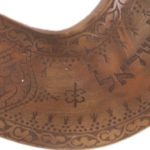Shofar
- What can we see?
We can see lots of curvy lines carved around the edges of the shofar. We can also see some Hebrew letters.
Look closely, what can you see?
- What do we know?
The shofar is a musical instrument used to announce the beginning of the Jewish festivals of Rosh Hashanah, the New Year, and Yom Kippur, the Day of Atonement. The sound is made by blowing into the smaller end of the instrument. The player produces different pitches by changing the shape of their lips and face muscles. A shofar is made from horn, typically a ram’s horn, but other animal horns may be used. A hole is made in the smaller end connecting it with the natural hollow in the main part of the horn. The shofar is then shaped and/or flattened using heat. According to Jewish law, a shofar cannot be painted with colours, but it can be carved with artistic designs.
This shofar was made in Germany in the 18th century and used in the Great Synagogue at Duke’s Place in the City of London. The Great Synagogue on Duke’s Place was founded in 1690 and was the first Ashkenazi Synagogue in England after the reestablishment of the Jewish Community in 1656. The Synagogue was the centre of Jewish worship, but it was destroyed by German bombing during the Second World War.
This shofar is engraved with a Hebrew inscription in a frame of foliage, a leaf-like pattern. The English translation is: ‘Blow the horn on the new moon, at the beginning of the month for our day of festival; for it is a statute for Israel, a decree of the God of Jacob’ (Psalm 81: 4-5). The inscription reminds us to blow the shofar at the new moon each month and at the beginning of the month during the festival days of Rosh Hashanah and Yom Kippur. We blow the shofar because it is one of the laws of God.
- What do we wonder?
We might wonder what the shofar sounds like? We wonder how someone might feel when they hear the shofar?
What do you wonder?
- Object File
Object name: Shofar
Date: 18th Century
Catalogue number: JM 194
Material(s): Horn
Artist: Unknown
Size: 48 cm in length
On display in the Jewish Museum? No
Rosh Hashanah is the festival of the Jewish New Year. It is the first of the High Holy Days. The High Holy Days begin with Rosh Hashanah on the first day of the month of Tishrei (usually around September/October) and end with Yom Kippur, the Day of Atonement, ten days later. The time in between the two festivals is a time for reflection, repentance, and decisions on what to do better in the coming year.
Rosh Hashanah begins at sundown with the blowing of the shofar in the synagogue. The blowing of the shofar symbolizes a wake-up call to worship and to repent, both literally and spiritually. Rosh Hashanah is similar to the secular New Year because it is a time for Jews to reflect on the events of the past year, apologise for any mistakes, and vow to make changes for the New Year ahead. It is also a time to ask for forgiveness and to forgive others. The traditional greeting on Rosh Hashanah is ‘Shanah Tovah’ which means ‘Have a good year.’
Yom Kippur is the holiest day of the Jewish year and people go to synagogue to pray, repent, and give to charity. Yom Kippur is called ‘The Day of Atonement’ and Jews are not allowed to have food or drink, work, play, bathe, or wear leather. Only young children, the elderly, the sick, and pregnant women are exempt from the Yom Kippur fast. It is traditional to wear white as a symbol of purity for the coming year. The shofar is blown to symbolize the end of Yom Kippur and the High Holy Days.



